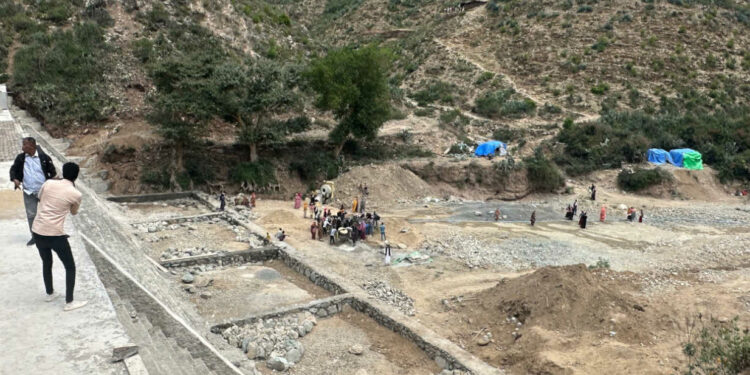
Share on FacebookShare on TwitterShare via Whatsapp
In the arid heartlands of Eritrea,the sound of water held back by stone masonry dams now replaces the silence of parched land. This quiet revolution isn’t powered by heavy machinery or distant promises,but by local materials,hardworking hands,and a clear vision: turning scarcity into self-reliance.
As one of the most drought-prone countries in the Horn of Africa,Eritrea has embraced a practical,community-driven approach: building small dams. Supported by the African Development Bank through its Drought Resilience and Sustainable Livelihoods Program (DRSLP),the country has constructed or rehabilitated over 880 hydraulic structures,mostly in historically underserved rural areas. “The difference is remarkable,” says Bekit Idris,a farmer from central Eritrea. “Before,we planted once a year and prayed for rain. Now,I harvest three times,feed my family,and sell at the market.” His story echoes across communities like Guritatal and Aderde,where new dams have shifted agriculture from subsistence to commercial production.
Africa honours its leadership for peace
Since 2015,the DRSLP has financed the building of 98 dams and 11 water supply points in Eritrea,while restoring over 200 hectares of degraded land. With storage capacities ranging from 30,000 to 110,000 cubic meters,these infrastructures enable continuous irrigation even during dry months. The impact goes beyond farming. Hamed Meskel,a farmer in the northern region,recounts how he stopped farming as wells dried up — until the dam project revived his land. His farm now serves as a demonstration plot for nearly 350 local families,with yields up by approximately 30% per hectare.
“This project has accelerated the shift toward resilient,sustainable,and market-oriented agriculture,” explains Kenneth Onyango,African Development Bank Country Program Manager in Eritrea. “More importantly,it has done so through community involvement and visible results.” With around 73% of Eritreans relying on agriculture for income and employment,each dam becomes a vital tool for holistic development — improving nutrition,boosting incomes,strengthening community bonds,and preparing rural areas to withstand climate change impacts.
To date,DRSLP has also promoted the construction of soil and water conservation structures on over 9,800 hectares,focusing on pastoral and agro-pastoral communities. The program,now in its fifth phase,is set to continue through December 2026. “This effort aligns with our national five-year strategic agricultural plan,” says Hadgu Gebrendrias,DRSLP coordinator at the Ministry of Agriculture. “We are planting more than food — we are planting resilience,stability,and hope.”
United News - unews.co.za